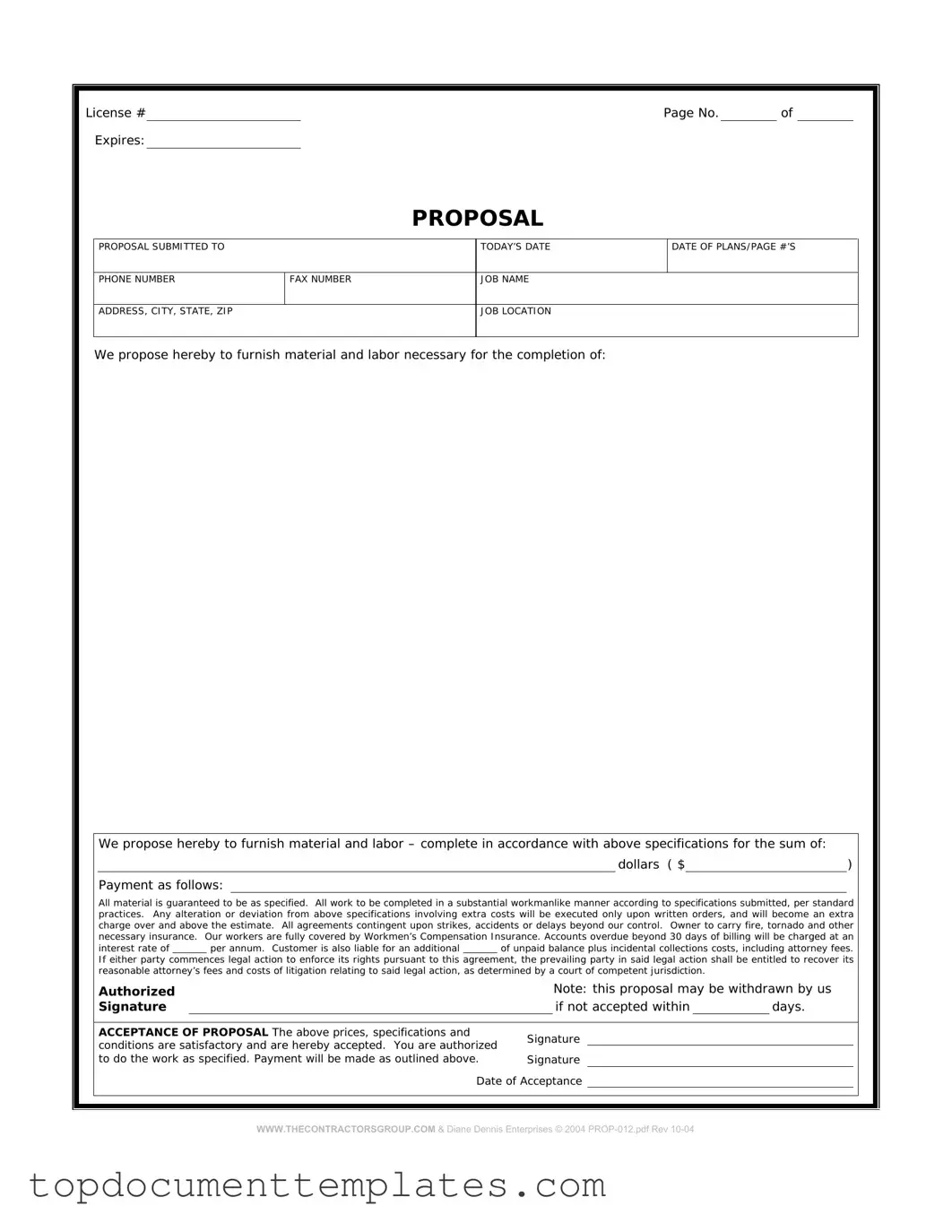When embarking on a construction project, clear communication and detailed planning are essential for success. The construction proposal form plays a crucial role in this process, serving as a formal document that outlines the specifics of a project, including scope, budget, and timelines. It typically includes sections for project descriptions, cost estimates, materials to be used, and a breakdown of labor requirements. Additionally, the form may require information about the contractor's qualifications, previous work experience, and references. By providing a structured format, the construction proposal form not only helps contractors present their bids in a professional manner but also assists clients in comparing different proposals effectively. A well-prepared proposal can set the tone for the entire project, ensuring that both parties have a clear understanding of expectations and responsibilities from the outset.
